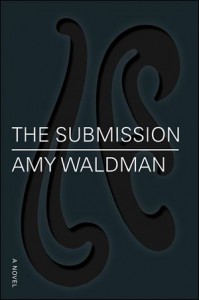[Farrar, Straus and Giroux; 2011]
by Miriam Krule
Sometimes you pick up a book because there’s fur on the cover. Other times it’s because the author criticized its selection for Oprah’s book club. With Amy Waldman’s debut novel The Submission, the premise alone is reason enough to read it.
Set two years after 9/11, it opens with a jury presiding over an anonymous contest to select the design for a memorial (though the attacks of September 11 are never referred to by name, they are clearly the inspiration). Unbeknownst to the jurors, the architect they choose is Muslim: Mo (short for Mohammad) Kahn. Before they have a chance to figure out what to do, or even inform the supposed winner, news of the selection breaks and the rest of the novel is spent dealing with the aftermath. The resulting work draws obligatory—and deserved—comparisons to Philip Roth’s The Plot Against America, with its false history of a time that defined our nation, and Tom Wolfe circa Bonfire of the Vanities, with his passionate, yet painfully corrupt characters who always seem to make the wrong decisions.
Told from a multitude of perspectives, the novel seems to be an attempt to depict every possible response of those affected by the attacks. Though the perspective weaves in and out to create a large, interconnected picture, Waldman focuses on three central characters who are each mourning lost loved ones. Scott is a middle-aged failure who finds meaning in his brother’s death; Asma is an illegal immigrant and the widow of an undocumented worker; and Claire is also a widow, though of a considerably more affluent background, and a member of the jury. While these three are meant to represent those who were most personally affected by the attacks, it seems strange that no person is mourning a woman.
With a project so ambitious it’s difficult to avoid such omissions. Waldman’s book is rich with potential, but it often seems as though she has too much material and isn’t sure what to with it. The controversy over the art and architecture of memorials, with the necessary name-dropping of Maya Lin and Richard Serra, comes up occasionally, but is never fully developed. And though much time is spent describing the seemingly simple winning memorial design, it never really feels alive or as meaningful as the jury finds it.
The same can be said about Waldman’s characters. While they each have an intricate and calculated back-story, they are there solely to serve some end goal. They each seem to be a caricature of a certain type of person in the post-9/11 landscape. It’s difficult to care about these one-dimensional characters, though at least for some, like Mo or Debbie, an anti-Muslim blogger, their purpose seems straightforward. With others, their cartoonish nature seems almost absurd and unredeemable if not downright confusing. This was most striking with the tabloid journalist Alyssa Spier, who is responsible for leaking the news of Mo’s win and creating much of the resulting hoopla. While all of her information is (for the most part) correct, she gathers it in questionable ways and presents it in a crude manner. While Claire and Mo may comprise the backbone of the novel, Alyssa is the one keeping it moving and it’s unclear why Waldman chose such a character to drive the story.
Very quickly the novel turns from portraits of those dealing with the consequences of September 11 to a true-to-life look at how Americans deal with Islamophobia. A great deal of the book delves into the discomfort the public – as the rest of the population not on the jury is referred to – feels about the selection. There are those, like Sean and Debbie, who are open with their anger and others who are uncomfortable, without knowing why, and in a very New York manner, “being uncomfortable makes [them] even more uncomfortable.”
Yet with all the time spent on Islamophobia, there is no “real talk” about Islam, and the characters who portray and defend the religion are just as corrupt as everyone else. No one wants another pedantic book, and a novel isn’t the place for a detailed history, but the opposite extreme is a fault in this case. The novel mimics the characters’ lack of desire to develop a deeper understanding of Muslims, and instead remains cursory in its dealings with the subject.
For me, the most compelling and emotional part of Waldman’s book comes toward the end, when the families of the dead have a forum to discuss their reactions to Mo’s selection. It is the first and only section that brought to mind the true magnitude of the events, and the only place you truly get as sense of what it must have felt like to lose someone that day. It reminded me of how far we’ve come since 9/11 in our ability to discuss the events while at the same time so little has changed as evidenced by our inability to move forward in any meaningful way in these discussions.
Ultimately, Waldman’s novel is thought provoking in its premise but disappointing in its execution. While enjoyable to read, it offers no real substance beyond its idea, and the idea of the book, like the idea behind Mo’s design, while noble, is never properly executed.
This post may contain affiliate links.









